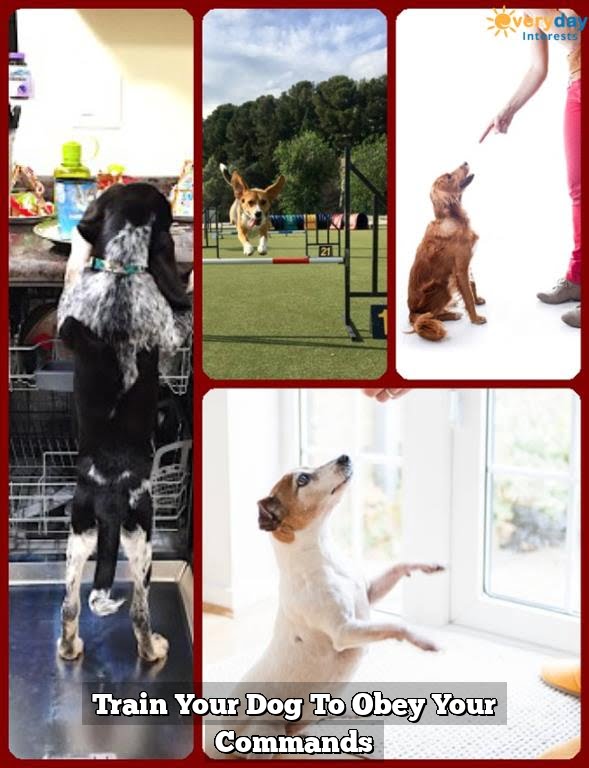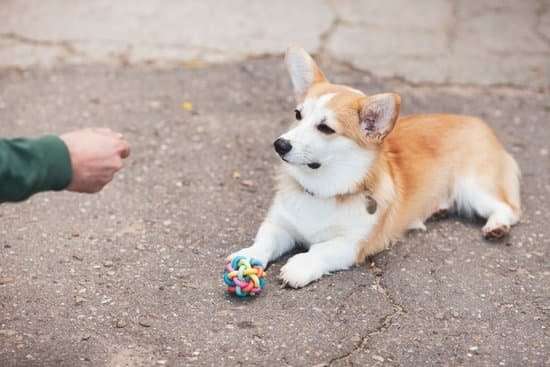Dogs communicate in many ways, from barking to whining, but one of the most enchanting sounds they can make is howling. Learning how to train your dog to howl can be a fun and rewarding experience for both you and your furry companion. Whether you want to teach your dog for entertainment or simply to strengthen the bond between you, this guide will walk you through the process step by step.
Understanding why dogs howl is crucial before embarking on training. Howling is a natural behavior for many breeds of dogs and serves various purposes, such as communication, expressing emotions, and establishing territory. By delving into the reasons behind your dog’s howling tendencies, you can tailor your training approach accordingly.
When it comes to choosing the right breed for howling, certain breeds are more predisposed to this vocalization than others. Breeds like Huskies, Beagles, and Bloodhounds are known for their melodious howls. However, any dog breed can be trained to howl with patience and consistency.
Establishing a strong bond with your dog will be key in successfully teaching them this skill. Through positive reinforcement and a loving relationship, you can create a trusting environment where your dog feels comfortable learning new behaviors.
Understanding Why Dogs Howl
Dogs are known to be quite vocal animals, and one of the most intriguing sounds they can produce is howling. Understanding why dogs howl can help dog owners better appreciate this behavior and even teach their furry companions how to howl on command. Here are some reasons why dogs may howl:
- Communication: Dogs are pack animals that use howling as a way to communicate with other members of their pack. In the wild, this can help them locate each other over long distances. So, when dogs howl at sirens or other dogs, they might be trying to connect with their packmates.
- Attention-seeking: Some dogs may resort to howling when they feel lonely, bored, or anxious. By vocalizing in this way, they hope to get your attention and hopefully some much-needed companionship.
- Instinctual Behavior: Howling is deeply ingrained in many dog breeds’ genetic makeup. Certain breeds, like huskies or hounds, have a natural inclination towards vocalization, which includes howling.
Training your dog to howl on command can be a fun and rewarding experience for both you and your furry friend. By following these tips and techniques, you can encourage your dog to express themselves through howling:
- Start by choosing a specific cue or trigger that will signal your dog to start howling. This could be a hand gesture, a word like “sing,” or even playing a recording of a wolf’s howl.
- Use positive reinforcement such as treats or praise when your dog responds to the cue by starting to howl. This will help them associate the behavior with something enjoyable.
- Be patient and consistent with your training sessions. Remember that not all dogs will immediately pick up on the concept of howling on command, so it might take time for them to perfect this skill.
By understanding the reasons behind your dog’s howling and using positive reinforcement techniques during training sessions, you can successfully teach your canine companion how to train your dog to howl With patience and dedication, you’ll soon find yourself enjoying harmonious duets with your furry friend in no time.
Choosing the Right Breed for Howling
When it comes to training your dog to howl, it’s essential to consider the breed of your furry friend. While all dogs have the potential to learn how to howl, some breeds are more inclined towards this behavior than others. Certain breeds are known for their melodious voices and natural inclination towards howling, making them ideal candidates for learning this skill.
How Breed Influences Howling
Some breeds are genetically predisposed to howling due to their ancestry and history. For example, breeds like Siberian Huskies, Alaskan Malamutes, and Beagles are known for their strong vocal cords and tendency to howl. These breeds were originally bred for activities like hunting or sled-pulling, which required communication over long distances through howling.
Choosing the Right Breed
If you’re interested in training your dog to howl, selecting a breed with natural inclinations towards this behavior can make the training process easier and more successful. Research different breeds known for their vocal abilities and choose one that aligns with your preferences and lifestyle. Remember that each dog is unique, so even if your chosen breed is known for howling, individual personalities may vary.
Establishing a Strong Bond With Your Dog
One of the key ways to establish a strong bond with your dog is through positive reinforcement. Rewarding good behavior, such as following commands or exhibiting desired traits, helps create a positive association between you and your dog.
This positive reinforcement encourages your dog to engage with you willingly and happily during training sessions. Additionally, spending quality time together, such as going for walks, playing games, or simply cuddling on the couch, can also strengthen the bond between you and your furry friend.
Communication is another vital component in building a strong bond with your dog. Understanding your dog’s body language, cues, and vocalizations can help you connect with them on a deeper level.
This understanding allows you to respond appropriately to their needs and emotions, which in turn fosters a sense of security and trust in your relationship. By communicating effectively with your dog and showing them love and support, you are laying the groundwork for successful training sessions on how to train your dog to howl.
Step-by-Step Training Process for Howling
Dogs are known for their unique and varied vocalizations, one of which is howling. Teaching your dog to howl on command can be a fun and engaging activity for both you and your furry friend. The key to successfully training your dog to howl lies in patience, consistency, and positive reinforcement.
To begin the training process, it’s important to choose a specific command or cue that you will use consistently when teaching your dog to howl. This could be as simple as saying “howl” or using a hand signal. Once you have chosen your command, start by getting your dog excited and engaged – perhaps by playing with their favorite toy or offering treats.
Next, wait for a natural moment when your dog starts to vocalize or make noise. As soon as they let out a sound resembling a howl, immediately use your chosen command cue. Then reward them with a treat and plenty of praise. Repeat this process several times during each training session, gradually working towards having your dog associate the command with the act of howling.
Consistency is key in training your dog to howl on command. Practice the steps regularly in short sessions, ensuring that you always end on a positive note with rewards for good behavior. With time and dedication, you will likely see progress in your dog’s ability to understand and respond to the cue for howling.
| Training Step | Description |
|---|---|
| Choose Command Cue | Select a specific word or gesture as the cue for howling. |
| Encourage Vocalization | Wait for natural sounds from your dog then introduce the command. |
| Reward and Repeat | Praise and treat your dog immediately after they follow the cue. |
Common Mistakes to Avoid During Training
When it comes to training your dog to howl, there are some common mistakes that many pet owners make. Avoiding these pitfalls can make a significant difference in the success of your training efforts. One of the most crucial mistakes to avoid is expecting too much too soon. Just like any other behavior, teaching your dog to howl takes time and patience.
Another mistake to avoid is using punishment as a means of correcting your dog’s behavior during training. Instead of scolding or punishing your dog for not howling on command, focus on positive reinforcement techniques. Rewarding your furry friend with treats, praise, or playtime when they successfully howl will encourage them to repeat the behavior.
In addition, consistency is key when training your dog to howl. Make sure that everyone in the household is on the same page and follows the same training methods. Inconsistency can confuse your dog and hinder their progress in learning how to respond to the howling command effectively. By avoiding these common mistakes and staying patient and consistent, you can effectively train your dog to howl on command.
| Mistake | Effect |
|---|---|
| Expecting too much too soon | Can lead to frustration for both you and your dog |
| Using punishment as correction | May cause fear or anxiety in your pet, hindering their progress |
| Lack of consistency | Confuses the dog and slows down the learning process |
Reinforcing Howling Behavior
Once you have successfully trained your dog to howl, it is important to reinforce this behavior to ensure that it becomes a consistent part of their repertoire. Reinforcement can help solidify the training and encourage your dog to continue howling in appropriate situations. Here are some tips on how to effectively reinforce howling behavior in your furry friend:
- Use positive reinforcement: Whenever your dog successfully howls on command or in response to a trigger, make sure to reward them with treats, praise, or playtime. Positive reinforcement helps strengthen the bond between you and your dog and motivates them to repeat the desired behavior.
- Be consistent: Consistency is key when reinforcing howling behavior. Make sure to reward your dog every time they howl as instructed, so they understand that this is the desired response. It’s important not to inadvertently reinforce unwanted behaviors, so be mindful of when and why you are rewarding your dog.
- Practice regularly: Practice makes perfect when it comes to training your dog to howl. Set aside time each day for training sessions and be patient with your furry companion. With consistent practice and reinforcement, your dog will become more confident in their ability to howl on cue.
In addition to using positive reinforcement, it’s also helpful to create a strong association between the cue for howling and the desired behavior itself. This can be done by consistently using the same verbal command or trigger before asking your dog to howl. By creating a clear association between the cue and the action, you can help reinforce the behavior and make it more reliable over time.
Remember that every dog is different, so be patient and understanding during the training process. Some dogs may take longer than others to learn how to howl on command, so it’s important not to rush or push them beyond their limits. By reinforcing their efforts with positivity and consistency, you can help your furry friend master the art of howling in no time.
Advanced Training Techniques for Howling
Introducing Different Cues for Howling
To take your dog’s howling to the next level, you can start introducing different cues that signal when it is time to howl. This can range from associating a specific hand signal or verbal command with the act of howling. Consistency is key when introducing these cues, so make sure to use the same cue every time you want your dog to howl.
Incorporating Howling Into Trick Training
One advanced technique for training your dog to howl is to incorporate it into trick training sessions. For example, you can teach your dog to howl on command as part of a larger routine or sequence of tricks. By integrating howling into trick training, you are not only strengthening the bond between you and your furry friend but also challenging them mentally and physically.
Gradually Increasing the Duration of Howling
As your dog becomes more comfortable with howling on command, you can gradually increase the duration of their vocalizations. Start by rewarding shorter instances of howling and then work your way up to longer durations. This will help build endurance in their vocal cords and make their howls more impressive over time.
By implementing these advanced training techniques for howling, you can further enhance your bond with your canine companion and showcase their unique talent to friends and family. Remember to be patient and consistent in your training efforts, as every dog learns at their own pace. With dedication and practice, you’ll soon have a well-trained dog that knows just when and how to let out a beautiful, melodious howl.
Troubleshooting and Tips for Successful Howling
When attempting to train your dog to howl, it is important to understand that each dog is unique and may respond differently to the training process. If you are facing challenges in getting your dog to howl on command, there are several troubleshooting tips and strategies you can implement to achieve successful howling.
One common issue that dog owners face when trying to teach their dogs to howl is impatience. It is essential to remember that training takes time and consistency. Rushing the process or becoming frustrated can hinder your progress with your furry friend. Take a step back, remain calm, and continue using positive reinforcement techniques to encourage your dog’s howling behavior.
Another common problem during the training process is inconsistency. To effectively train your dog to howl, it is crucial to establish a routine and stick to it. Consistent training sessions, clear commands, and regular practice will help reinforce the desired behavior in your dog. Remember, patience and persistence are key when teaching your dog new skills such as howling.
If you are still encountering difficulties in training your dog to howl, consider seeking guidance from a professional trainer or behaviorist who specializes in canine vocalization. They can assess your specific situation, provide personalized advice, and offer additional tips and techniques tailored to your dog’s needs. With dedication, patience, and proper guidance, you can successfully train your dog to howl on cue and enjoy this unique bonding experience with your furry companion.
Fun Activities to Enjoy With Your Howling Dog
In conclusion, training your dog to howl can be a rewarding and enjoyable experience for both you and your furry companion. By understanding the reasons behind why dogs howl, choosing the right breed, establishing a strong bond, and following a step-by-step training process, you can successfully teach your dog to howl on command. It is important to remember that patience, consistency, and positive reinforcement are key components in this training journey.
Additionally, avoiding common mistakes during training and implementing advanced techniques can help enhance your dog’s howling abilities. Troubleshooting any challenges that may arise along the way and incorporating helpful tips will ensure a successful outcome in teaching your dog to howl. Remember to reinforce desired behaviors consistently through praise, treats, or playtime to maintain a strong foundation in your dog’s howling skills.
Lastly, once your dog has mastered the art of howling, there are various fun activities you can enjoy together. Whether it’s participating in canine musical performances, joining a dog choir, or simply serenading each other at home, the bond between you and your howling dog will only grow stronger as you engage in these enjoyable pastimes together. So grab some treats, practice those vocal exercises, and have a blast with your newly trained howling companion.
Frequently Asked Questions
How Do I Get My Dog to Howl?
To get your dog to howl, you can start by playing recordings of howling dogs or even howling yourself to encourage imitation. Another way is to use a command like “sing” and reward your dog when they howl.
Is It OK to Teach a Dog to Howl?
Teaching a dog to howl can be okay as long as it is done in a positive and non-stressful manner. It’s essential to ensure that the training is fun for your pet and that they are not forced into behavior they are uncomfortable with.
Is It OK if My Dog Doesn’t Howl?
It is perfectly fine if your dog doesn’t howl. Not all dogs have the inclination or genetic predisposition to howl, and that’s completely normal. Each dog has its unique ways of communicating, so not howling doesn’t indicate any issues with your furry friend.

Welcome to the blog! I am a professional dog trainer and have been working with dogs for many years. In this blog, I will be discussing various topics related to dog training, including tips, tricks, and advice. I hope you find this information helpful and informative. Thanks for reading!





